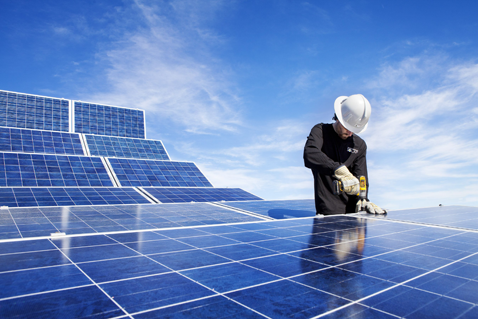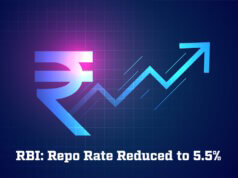The country crossed the milestone of 5000 mw of grid-connected installed capacity in solar energy on 14 January, reaching 5130 mw, with 1385 mw added in the ongoing fiscal. The state of Rajasthan stands 1st in the country with 1264 MW, followed by Gujarat (1024MW), Madhya Pradesh (679 MW), Tamil Nadu (419 MW), Maharashtra (379 MW) and Andhra Pradesh (357 MW).
The Government has set an ambitious target of generating 100 GW of solar power by the year 2021-22 under the National Solar Mission. This would comprise 60 GW ground mounted grid-connected solar power and 40 GW through roof-top grid interactive solar power. The Ministry of New & Renewable Energy has also fixed year-wise targets: The target for the current year is 2,000 MW and next year target is 12,000 MW. It has been planned that tenders for around 18,000 MW should be out by 31st March. Solar power has played only a limited role in power generation thus far, with installed capacity reaching 3.7 GW in 2014, much of this added in the last five years. However, the country began to put a much stronger emphasis on solar development with the launch in 2010 of the Jawaharlal Nehru National Solar Mission, the target of which was dramatically upgraded in 2014 to 100 GW of solar installations by 2022.
To achieve the objective several schemes are launched; like Scheme for Development of Solar Parks and Ultra Mega Solar Power Projects; Scheme for Development of Solar PV Power Plants on Canal Banks/ Canal Tops; Scheme for setting up 300 MW of Grid connected Solar PV Power Projects by Defence Establishments with viability Gap Funding; scheme of setting up 1000 MW of Grid- Connected Solar PV Power Projects by CPSUs with Viability Gap Funding ; grid connected 15000 MW Solar Power Projects by NTPC/NVVN; and setting up of 2000 MW Grid connected solar power with Viability Gap Funding through Solar Energy Corporation of India (SECI). This apart, an ambitious scheme has been launched by the Ministry for roof-top solar installation.
Also, the International Solar Alliance (ISA) has been launched in November last at the CoP21 Climate Conference in Paris as a special platform for mutual cooperation among 121 solar resource rich countries lying fully or partially between Tropic of Cancer and Tropic of Capricorn. The government would provide land and $30 million to form a secretariat for the Alliance, and also support it for five years. The participants, mostly in Latin America and Africa but also include US, China, and France.
The Ministry has approved 56 solar cities projects against the target of 60 solar cities under the Development of Solar Cities Programme. The Government has also approved a Scheme for setting up of 25 Solar Parks, each with the capacity of 500 MW and above and Ultra Mega Solar Power Projects to be developed in next 5 years in various States. These parks will be able to accommodate over 20,000 MW of solar power projects.
Policy initiatives include
- State Electricity Regulatory Commissions (SERCs) of twenty States have notified regulatory framework on net-metering and feed-in-tariff to encourage rooftop solar plants.
- Inclusion of Renewable Energy Projects in Priority Sector Lending Norms of Commercial Banks since April 2015.
- Bank loans up to a limit of Rs 15 crore to borrowers for purposes like solar based power generators, biomass based power generators, wind mills, micro-hydel plants and for non-conventional energy based public utilities Viz. Street lighting systems, and remote village electrification. For individual households, the loan limit will be Rs 10 lakh per borrower.
- PPAs have been standardized for projects under JNNSM.
- Net-metering schemes has been rolled out in majority of States which will help in meeting 40 GW rooftop grid connected solar projects.
- Fiscal incentives in the form of Accelerated Depreciation for wind and solar by Central Govt. and refund of stamp duty, refund on Value Added Tax (VAT) & Goods and Service tax (GST) by some State Govts.











